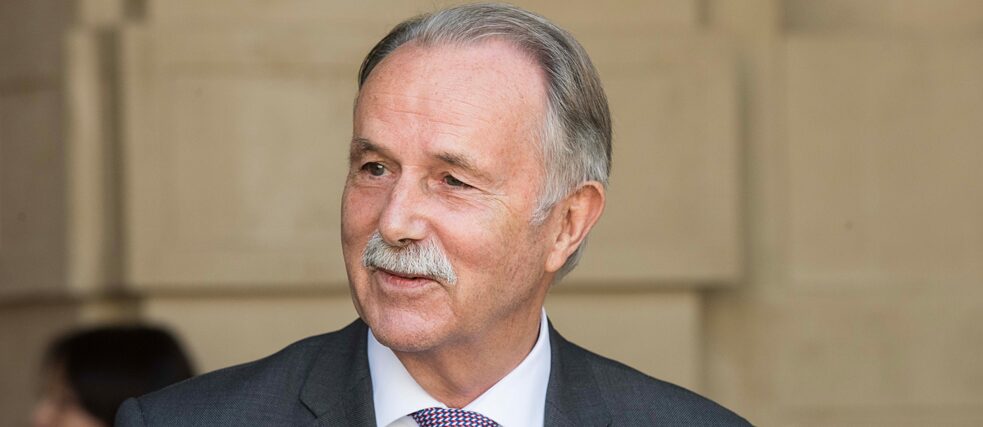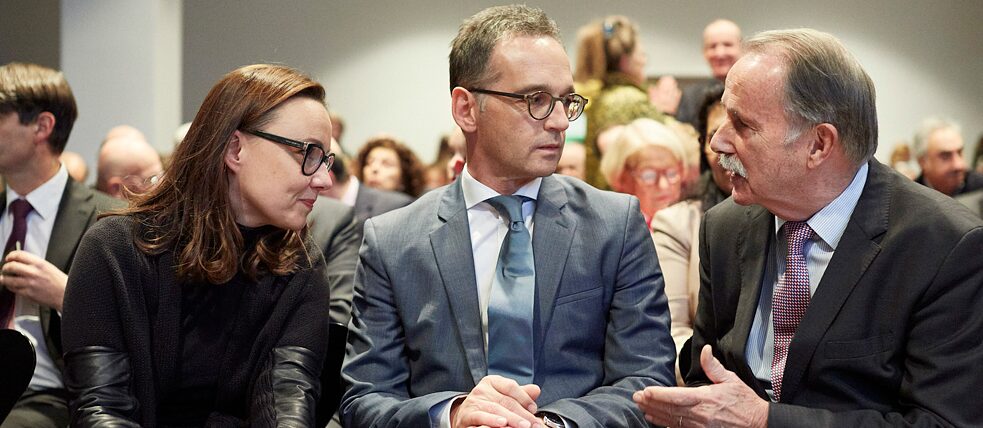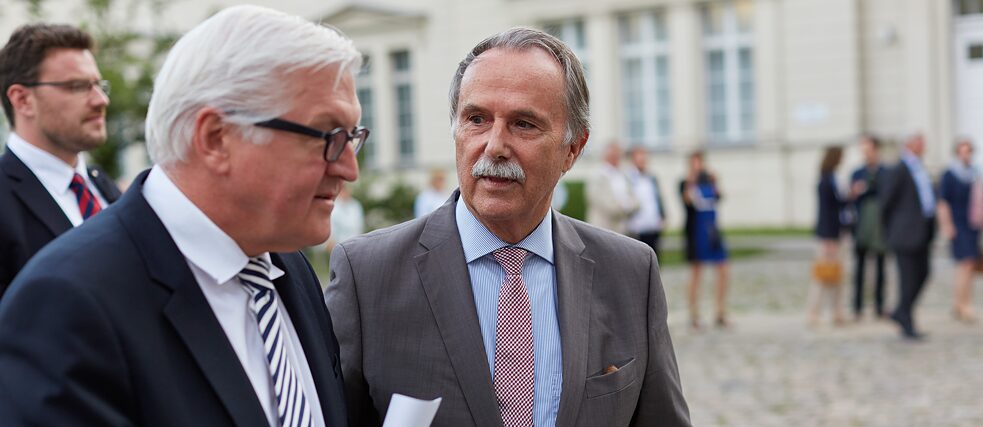Klaus-Dieter Lehmann’s 80th Birthday
“Working with an open visor”

It all started with an Apollo 11 moon rock. But the natural scientist Klaus-Dieter Lehmann was instead drawn into the world of culture. It’s still holding on to the president of the Goethe-Institut.
By Gerd Roth, dpa
Berlin (dpa) - He connected the library systems all over Germany, got one of the most important museum institutions back on track and gave Germany’s cultural face to the world a lift. It’s hard to identify any moments in which Klaus-Dieter Lehmann worried about a job being too big. “I want to bring about change, I also want to organise things,” says Lehmann of himself. His recipe: “I venture to work in large and small groups with an open visor.”
The president of the Goethe-Institut will turn 80 on Saturday (29 February). It all began quite differently, but no less spectacularly. Lehmann, a mathematician and physicist, developed a device in the 1960s that US researchers were able to use to examine the moon rock that Apollo 11 had just brought back to earth. “I built a mass spectrometer that can separate the smallest isotopes,” Lehmann says, explaining his relationship to space research. It enabled the Americans to determine “where this material comes from, its cosmic compositions.”
 Klaus-Dieter Lehmann talking to Minister of State Michelle Müntefering and Foreign Minister Heiko Maas. | Photo (detail): Dawin Meckel
Klaus-Dieter Lehmann talking to Minister of State Michelle Müntefering and Foreign Minister Heiko Maas. | Photo (detail): Dawin Meckel
“I’m a culture person”
But the fascination with space travel was not able to draw Lehmann in. “Science was a rational decision in career choices,” Lehmann told dpa. “Basically I’m a culture person; literature is my passion.” His passion drew Lehmann to library science. The beginning digital transition allowed him to connect the two worlds. “I was able to unite computers and networks wonderfully for literature and pursue my passion as a trained natural scientist. It wasn’t a bad choice.” The Hessian libraries were his first network system. In the late 1980s, Lehmann was director-general of the Deutsche Bibliothek in Frankfurt am Main. His next major endeavour came between the fall of the Berlin Wall and German reunification: merging the Deutsche Bücherei (East) and the Deutsche Bibliothek (West). “We actually met in the Thuringian Forest between Leipzig and Frankfurt. At the halfway point so that no one could say ‘We’re being occupied.’” As early as March 1990, a finished concept was unveiled for one Deutsche Nationalbibliothek, the German National Library, to which the Berlin location was added with the German Music Archive.Big endeavours in Berlin
Which brings us to “his” city. “Berlin with its ferociousness, with its incompleteness, with its opportunities for shaping. That’s my town.” Lehmann was born in Breslau, today’s Wrocław. “I’ve always said: Breslauers always end up in Berlin. I just took a detour.” Berlin had the next big endeavour waiting for Lehmann in the late 1990s. As president of the Prussian Cultural Heritage Foundation, which is funded by the federal and state governments, he assumed responsibility for almost two dozen museums, collections and institutions.In ten years, until 2008, Lehmann initiated important future projects. The first phase of the Humboldt Forum, which is still controversial because of its castle shell, is to open this year. The master plan for the World Heritage Site of the Museum Island extends into the next decade. Here, too, Lehmann’s method of bringing people from all levels of competence and decision-making to the table proved its worth. “We basically had a round table. There were the museum people, the financial experts, the conservationists, the architects. We reached an agreement in this round; everyone put forward their arguments. The minutes of such a meeting were the instructions for action.” For the master plan, the experts “sat together like during a papal election for three days until the white smoke rose.”
 Klaus-Dieter Lehmann with Federal President Frank-Walter Steinmeier. | Photo (detail): Bernhard Ludewig
Klaus-Dieter Lehmann with Federal President Frank-Walter Steinmeier. | Photo (detail): Bernhard Ludewig